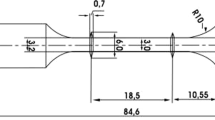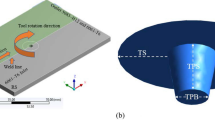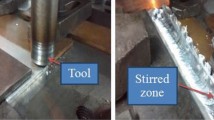Abstract
A process called controlled thermomechanical rolling has been developed to make low-alloy steels used in the production of large-diameter pipes. The process, carried out on plate mills, combines thermomechanical (controlled) rolling with accelerated cooling done after the rolling operation. The results of commercial trials of the technology lead to the following conclusions: 1. Compared to conventional controlled rolling (CR), use of the additional operation of accelerated cooling (AC) makes it possible to significantly increase strength properties without lowering impact toughness or cold resistance. Accelerated cooling also makes it possible to broadly vary the properties of rolled products of a given chemical composition and thickness. 2. The accelerated cooling of plates makes it possible to replace the ferritic-pearlitic structure usually formed in steel after conventional controlled rolling with a fine-grained ferrite-bainite stucture having a diminished level of striation. 3. Compared to traditional controlled rolling, CR + AC makes it possible to attain a prescribed level of strength with lower quantities of carbon and alloying elements. That in turn improves the weldability of the steel. 4. The use of accelerated cooling reduces the load on the mill because a higher finishing temperature is used than in traditional CR. Thus, it also becomes possible to increase rolling speeds through a reduction in the number of pauses made to cool the slabs on the mill.
Similar content being viewed by others
REFERENCES
A. Streisselberger, H.-J. Kirsch, and V. Schvinn, “Process developments in TMCP to produce heavy plates in high strength steel grades,” Proc. 2nd Int. Conf. on Thermomechanial Processing of Steels, Liege, Belgium, June 15–17, 2004.
Yu. I. Lipunov, K. Yu. Eismondt, G. G. Trayanov, et al., “Mastering the use of equipment for the controlled cooling of plates in the line of the 5000 mill at Severstal',” Stal', No. 3, 55–61 (2005).
K. Yu. Eismondt, Yu. I. Lipunov, D. V. Zavgorodnev, et al. “Automated system for controlling equipment designed to perform controlled cooling on a 5000 mill,” ibid., No. 3, 61–65 (2005).
S. Yamamoto, Ch. Ouchi, and T. Osuka, Thermomechanical Processing of Microalloyed Austenite, TMS, Warrendale (PA) (1982), pp. 613–639.
“High strength large diameter pipe plate — from standard production to X80/X100,” Niobium Inf., No. 13, 104 (1997).
F. Heisterkamp, K. Hulka, Yu. I. Matrosov, et al., Niobium-Bearing Low-Alloy Steels [in Russian], SP INTERMET ENGINEERING, Moscow (1999), pp. 20–22.
H. Hillenbrand, M. Grass, and C. Kalva, “Development and production of high strength pipeline steels. Niobium science and technology,” Proc. Int. Symposium on Niobium, Orlando, Florida (U. S.), Dec. 2–5, 2001, pp. 543–571.
Author information
Authors and Affiliations
Additional information
__________
Translated from Metallurg, No. 6, pp. 49–54, June, 2005.
Rights and permissions
About this article
Cite this article
Matrosov, M.Y., Efron, L.I., Il'inskii, V.I. et al. Use of Accelerated Cooling to Improve the Mechanical and Processing Properties of Rolled Plates Used to Make Large-Diameter Gas-Line Pipe. Metallurgist 49, 220–229 (2005). https://doi.org/10.1007/s11015-005-0082-2
Issue Date:
DOI: https://doi.org/10.1007/s11015-005-0082-2




